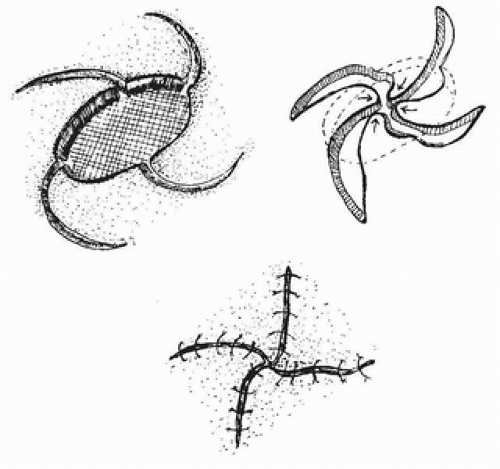Multiple Pinwheel Scalp Flaps
T. R. VECCHIONE
The removal of scalp lesions with primary closure can tax the imagination and ingenuity of the surgeon. Lesions greater than 3.0 cm in diameter sometimes require extensive mobilization of surrounding tissues and/or elaborate flap designs for closure. The literature is filled with variations of transposition and rotation flaps for these situations (1, 2, 3).
This is not a new method, but a practical variation on a well-established theme. This application is a multi-flap closure, and it takes on a pinwheel or camera-shutter configuration.
INDICATIONS
This method takes advantage of a full 360° of mobilization of the surrounding tissues. Excision and linear closure move tissue in only two directions. There is essentially no elasticity of the scalp, and complete mobilization of flaps of surrounding tissue is necessary even for short tissue advancement. If the lesion is simply removed and closed in a straight line, a significant amount of normal tissue must be removed.
 FIGURE 2.1 The inscription of the four arcs can be geometrically constructed using the technique described in the text. |
The advantages of this pinwheel method are as follows:
Minimal undermining
Ease in design
No excessive excision of normal tissue (apart from minimal recontouring of small dog-ears)
The distribution of tension over four radiating suture lines instead of one.
ANATOMY
The multiflap closure in a pinwheel fashion can be used anywhere on the scalp, since the mobility and blood supply are relatively uniform (see Chapter 1).
Stay updated, free articles. Join our Telegram channel

Full access? Get Clinical Tree








